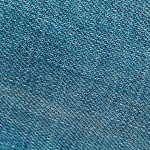To break in your selvedge jeans, start by wearing them regularly without washing to let the fabric mold naturally to your body. Avoid washing too soon; instead, air them out and gently stretch tight spots using light movements or hand massage. When washing, use cold water and mild detergent sparingly. Over time, the denim will soften, loosen, and develop unique fades that fit you perfectly. Keep going, and you’ll discover tips to speed up the process and maintain your jeans best.
Table of Contents
Key Takeaways
- Choose selvedge jeans that fit snugly but aren’t painfully tight to allow natural contouring during break-in.
- Avoid washing before breaking in; air jeans to remove factory odors and optionally dampen to soften fibers.
- Wear jeans daily for several weeks without washing to develop personalized fades and soften fabric.
- Use gentle stretching by dampening tight spots, doing light movements, and manually massaging stiff areas.
- Wash infrequently with cold water inside out using mild detergent; air dry flat or hang to preserve shape.
Understanding Selvedge Denim Fabric
Although selvedge denim might look similar to regular jeans at first glance, you’ll notice its unique edge—a tightly woven band that prevents fraying. This edge runs along the fabric’s outseam, created on old-school shuttle looms, which produce a denser, more durable denim.
Unlike mass-produced denim, selvedge fabric features a clean, finished edge, reflecting higher craftsmanship. When you wear selvedge jeans, you’re experiencing a fabric that’s built to last and age beautifully with time.
The weight and rigidity of selvedge denim also mean it molds to your body uniquely, creating personalized fades. Understanding these qualities helps you appreciate why breaking in selvedge jeans requires patience but rewards you with a truly customized fit and look.
Preparing Your Selvedge Jeans for Breaking In
Before you start breaking in your selvedge jeans, it’s important to prepare them properly to guarantee a comfortable fit and lasting wear.
First, check the size and fit when you try them on. Selvedge denim is stiff initially, so make sure they’re snug but not painfully tight.
Next, avoid washing your jeans before breaking them in, as this preserves the raw denim’s natural stiffness and dye. Instead, hang them in a well-ventilated area to air out any factory odors.
If you want to speed up the softening process, you can lightly dampen the jeans with water, but don’t soak them.
Proper preparation sets the foundation for your jeans to mold perfectly to your body over time.
Wearing Your Jeans Regularly
Since selvedge denim is designed to adapt to your body’s unique shape, wearing your jeans regularly is key to breaking them in effectively. The more you wear them, the more the fabric softens and molds to your movements.
Aim to wear your jeans daily or as often as possible without washing, since frequent washing can slow the fading and shaping process. Pay attention to how they feel during different activities; this will help the denim form naturally around your body’s contours.
You might notice stiffness at first, but that’s normal. Over time, the jeans will loosen up and become more comfortable. Consistency is essential—regular wear encourages natural creases and fades that give selvedge denim its character and personalized fit.
Using Gentle Stretching Techniques
Wearing your selvedge jeans regularly helps them mold to your body, but sometimes you’ll want to speed up the process or ease tight spots. Gentle stretching techniques can make your jeans more comfortable without damaging the fabric.
Start by dampening the tight areas slightly with water, then carefully stretch them by hand. Focus on the waistband, thighs, or calves where you feel the most restriction.
Try these simple stretches to break them in faster:
- Pull the fabric gently in different directions to loosen stiffness.
- Wear them while doing light movements like squats or lunges to naturally stretch.
- Use your hands to massage and stretch the denim around tight spots.
These methods help your jeans adapt to your shape while preserving their durability and look.
Washing Tips for Raw Selvedge Denim
How often should you wash your raw selvedge denim to keep it looking sharp? Ideally, you want to wash them as infrequently as possible—every 6 months or after 50+ wears—to preserve the fabric’s color and structure.
When you do wash, turn your jeans inside out to protect the indigo dye and use cold water with a mild detergent. Avoid bleach and fabric softeners as they can damage the fibers. Hand washing is best, but if you use a machine, choose a gentle cycle.
After washing, air dry your jeans flat or hang them to retain shape and prevent shrinking. Following these tips helps maintain your selvedge denim’s integrity while allowing those unique fades to develop naturally over time.
Accelerating the Break-In Process Safely
Although breaking in raw selvedge denim naturally takes time, you can speed up the process without risking damage. The key is to wear your jeans consistently and move actively in them, letting the fabric mold to your body.
Breaking in raw selvedge denim takes time, but consistent wear and movement help speed up the process safely.
Avoid harsh treatments that might weaken the fibers. Instead, try these safe techniques to accelerate your jeans’ unique character:
- Wear them during daily activities: The more you move, the faster they conform.
- Perform simple stretches and squats: This encourages flexibility without stressing the fabric.
- Use a damp cloth to spot soften tight areas: It helps the denim relax gently without full washing.
These steps help you break in your selvedge jeans faster while preserving their durability and style.
Caring for Your Jeans During the Break-In Period
You’ll want to limit washing your selvedge jeans to keep their shape and color intact during the break-in period.
When stains happen, spot clean gently to avoid unnecessary wear.
These simple care steps will help your jeans age beautifully while staying comfortable.
Washing Frequency Tips
During the initial break-in period, washing your selvedge jeans sparingly is key to preserving their shape and color.
You want to let the fabric mold to your body, developing unique fades and creases that make your jeans truly yours. Frequent washing can fade the deep indigo and loosen the sturdy fibers prematurely.
Instead, focus on wearing your jeans regularly but avoid washing unless absolutely necessary.
Remember, patience pays off. Here’s why you’ll want to hold off on washing too soon:
- You’ll cherish the personalized wear patterns that only time can create.
- The deep indigo will stay rich and vibrant longer.
- Your jeans will keep their original fit and durability.
Stain Removal Methods
A quick response is essential when stains appear on your selvedge jeans to keep them looking their best without compromising the fabric.
First, gently blot the stain with a clean cloth to absorb excess liquid—never rub, as this can damage the fibers.
For fresh stains, use cold water and a mild soap, applying it sparingly with a soft brush or cloth.
If the stain persists, try a diluted vinegar solution, but always test it on a hidden area first.
Avoid harsh chemicals or bleach, as they can fade or weaken the denim.
Let the jeans air dry naturally after spot cleaning.
Recognizing When Your Jeans Are Fully Broken In
You’ll know your selvedge jeans are fully broken in when you see unique wear patterns developing along the seams and creases.
The fit will feel more comfortable, molding perfectly to your body without any stiffness.
Pay attention to these changes—they signal that your jeans have truly adapted to your lifestyle.
Signs of Wear Patterns
Wear patterns reveal when your selvedge jeans have truly settled into your lifestyle.
As you wear them, you’ll notice specific areas showing unique fading and creasing, telling the story of your daily movements. These signs confirm your jeans have molded perfectly to your body and habits.
Look for these key indicators:
- Honeycombs behind the knees: Deep, textured fades that show your natural bending motion.
- Whiskers near the crotch and front pockets: Fine crease lines that develop from regular sitting and walking.
- Fading along the thighs and seat: Areas where fabric softens and lightens, reflecting constant wear and pressure.
Spotting these wear patterns means your selvedge jeans have become a personalized, lived-in piece of clothing.
Comfort and Fit Changes
Once your selvedge jeans have softened and adapted to your movements, you’ll notice a distinct shift in comfort and fit. They’ll feel less rigid and hug your body more naturally without pinching or restricting. Recognizing this change means your jeans are fully broken in.
| Comfort Indicator | What It Means |
|---|---|
| Soft fabric | Denim fibers have loosened |
| Natural stretch | Jeans move with you, not against you |
| No tightness at joints | Areas like knees and hips feel free |
| Consistent fit | Jeans hold shape without discomfort |
| Personalized fade | Unique wear patterns appear |
When you experience these signs, your jeans have truly molded to your lifestyle and body shape.
Frequently Asked Questions
Can Selvedge Jeans Shrink After the First Wash?
Yes, your selvedge jeans can shrink after the first wash, especially if you use hot water or high heat drying. To avoid excessive shrinking, wash them in cold water and air dry whenever possible.
Are There Specific Brands Known for Easier Break-In?
You’ll find brands like Levi’s, Nudie Jeans, and Unbranded offer selvedge denim that breaks in more comfortably. They use softer fabrics or pre-washed techniques, making your wearing experience easier from the start.
How Do Selvedge Jeans Compare to Regular Denim in Durability?
Think of selvedge jeans as the fortress of denim—they’re woven tightly with a self-finished edge, making them more durable than regular denim. You’ll find they resist wear and tear better, lasting longer through your daily adventures.
Can You Break in Selvedge Jeans Without Wearing Them Daily?
You can break in selvedge jeans without daily wear by doing activities like gentle stretching and spot cleaning. However, regular wear helps the fabric mold to your body better, speeding up the break-in process naturally.
Is It Safe to Use Heat to Speed up the Break-In Process?
Like using a telegraph in the smartphone age, applying heat to break in selvedge jeans isn’t the safest shortcut. You might damage fibers or shrink them. Stick to natural wear for the best, lasting fit.
- What Is Pochampally Ikat? a Journey to India’s Silk City - June 27, 2025
- What Is Pochampally Ikat? a Journey to India’s Silk City - June 27, 2025
- What Is Pochampally Ikat? a Journey to India’s Silk City - June 27, 2025







